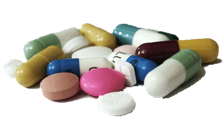 Each year the pharmaceutical industry develops new drugs that go a long way towards fighting some of the world’s worst diseases. For instance, Bristol-Meyers Squibb recently received FDA (Food & Drug Administration) approval for Opdivo, a drug that significantly boosts the survival rate for sufferers of advanced melanoma. However, one major obstacle stands in the way of Opdivo’s ability to help patients: price. One year of treatment with the drug costs $150,000 per patient, an impossibly tall order for many insurers and prescription benefits companies.
Each year the pharmaceutical industry develops new drugs that go a long way towards fighting some of the world’s worst diseases. For instance, Bristol-Meyers Squibb recently received FDA (Food & Drug Administration) approval for Opdivo, a drug that significantly boosts the survival rate for sufferers of advanced melanoma. However, one major obstacle stands in the way of Opdivo’s ability to help patients: price. One year of treatment with the drug costs $150,000 per patient, an impossibly tall order for many insurers and prescription benefits companies.
In fact, more than 30 cancer drugs that hit the market from 2010 to 2014 cost at least $5,000 per month. As a result, benefits administrators often pass over these breakthrough drugs in favor of cheaper alternatives. In one case from last year, the prescription management company Express Scripts excluded a new hepatitis C drug from coverage due to its $1,000 per day price tag. Instead, the company added a heavily discounted alternative drug from another pharmaceutical maker. While this is frustrating news for the 85 million Americans who rely on Express Scripts to manage their medicine, the health care company can’t do much else when faced with ever-increasing costs.
These soaring drug prices could eventually affect innovation in the pharmaceutical industry. After all, what good is a breakthrough cancer treatment if no one can afford to pay for it? This problem doesn’t come with any easy solutions. “We can cut prices, cut the drugs that are covered, or cut the number of beneficiaries, and none of those are very palatable,” said Stephen Schondelmeyer of the University of Minnesota. “All mean reduced revenue for the drug companies. We will have to do one or more of those three things at some point in the next five years.” Researchers say that as many as 35 new drugs will hit the market each year through 2018, a huge improvement from the annual average of 25 produced from 2000 to 2013. However, drug development could see these meager numbers return if costs continue to skyrocket the way they are.
Questions:
- What’s a major cost problem U.S. drug makers face in the United States?
- How many years do drug companies enjoy patent protection for drugs they produce?
Source: Robert Langreth and Oliver Staley, “The Drug Pipeline Flows Again,” Bloomberg BusinessWeek, February 26, 2015. Photo by: e-Magine Art.
